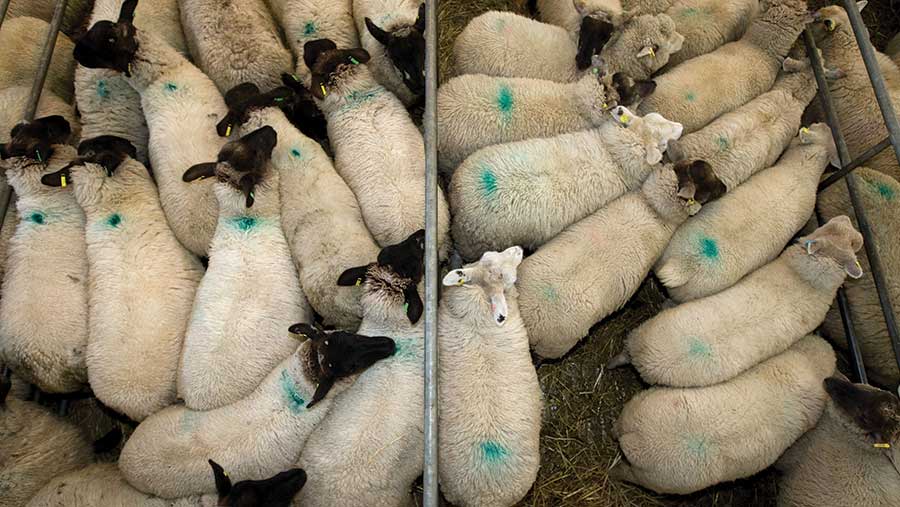Store lamb prices soar as buyers expect scarcity in new year
 © Tim Scrivener
© Tim Scrivener Prices for fat lambs are expected to rise in early 2020 as demand remains strong for sheepmeat, and supply tightens.
This year’s prolonged political uncertainty in the UK and changes in global trade routes have resulted in strong export demand, but a lower-than-average number of lambs left on farm.
Good grass growing weather early in the season also supported an earlier slaughter of the 2019 lamb crop, says the AHDB.
See also: Tips to help livestock farmers plan a winter feed budget
Price update
The GB liveweight SQQ, for lambs weighing between 25.5kg and 45.5kg, increased by 1.59p in the week ending 10 December to average 193.31p/kg.
This brings it to more than 8p above last year and about 20p higher than the five-year average.
The GB deadweight SQQ average (lambs weighing between 12kg and 21.5kg) for the week ending 7 December rose 4.1p to 427.4p/kg, nearly 35p above the five-year average and just over 24p above last year.
Store lamb prices have been rising since October, with Sedgemoor market seeing a top price of £101 and overall average of £69.02 on 7 December – up from a high of £88 and an average of £63.14 a month earlier.
Sedgemoor auctioneer Paul Ashton said there are fewer lambs left in the South West than at this time last year, with throughput of both store and fat lambs down at the auction.
“A lot of people were very worried about 31 October [Brexit deadline]. Now they have been trickling them out to spread their risk and take a decent average,” he said.
The wet autumnal weather also encouraged some farmers to sell early, rather than holding lambs back until after Christmas.
However, Mr Ashton said farmers should be cautious about expecting prices to rise as high as spring 2018, as he would expect significant resistance from buyers.
Fewer lambs left
Compared with year-earlier levels, the number of lambs slaughtered in November and December 2019 is likely to be about 100,000 head lower, and 265,000 head lower during the carry-over period in 2020, according to the AHDB.
UK sheepmeat production is forecast to be between 300,000 and 307,000t in 2019, with about a 5% fall expected in 2020, to 287,000t.
This is because the levy board is forecasting that the breeding flock will be slightly smaller in December 2019 than it was in 2018, with the lamb rear rate returning to the five-year average.
Imports and exports
Imports are expected to fall a further 6% in 2020, even after a significant decline this year, to about 69,000t.
China’s import requirement for all animal protein, not just pork, is already influencing the UK sheepmeat market by drawing New Zealand product away from Europe.
As well as directly reducing imports from New Zealand, this change has allowed UK exporters to backfill volumes left in other European countries, such as France and Germany.
Exports are typically around one third of domestic production, but have the scope to be higher in 2020 than they were in 2019.
False economy
Robert Ramsay, agricultural consultant at SAC Consulting, said: “We are now very much in a sellers’ market, where lambs are in demand and being sold to advantage.
“In a rising market, it may be tempting to hold on to lambs, add a few more kilos and hope the price continues to rise. This approach is, however, false economy.”
With recent cold weather reducing grass growth dramatically, rather than wasting this valuable resource on adding weight to lambs, sell them and try to have as little stock on farm as possible heading into the months with the highest feed costs, Mr Ramsay advises.
